
views
Finding the Right Snake
Check regulations regarding pet snakes in your area. Certain snakes may be illegal in certain areas. Exotic pets may not be allowed in some places, or you may need to have a permit for owning a snake. Check with the U.S. Department of Agriculture (USDA), or your local government, to see if there are regulations regarding pet snakes.

Choose a suitable species of snake. There are many different species of snakes, some more suited to becoming a pet than others. Certain snakes grow up to 30 ft (9 m) long! Some snakes can live up to 30 years, so you need to be prepared for that kind of commitment. If you’ve never owned a snake before, you may want to start with a corn snake, a ball python, or a kingsnake. These snakes have the best temperaments, least amount of feeding issues, highest level of hardiness and healthiness, and come in a variety of colors.
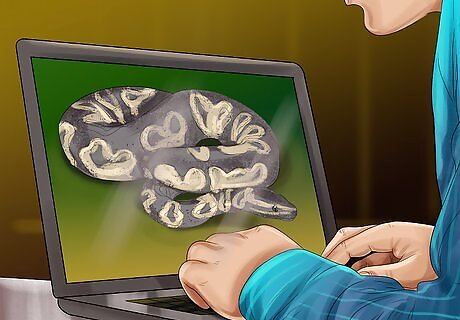
Educate yourself about a snake’s needs. You’ll need to learn a lot about the snake you want before purchasing it. Research to find out about the particular snake’s habitat (including lighting and heating requirements) diet, size, temperament, and life span. Make sure you really want a snake and are prepared to take good care of it for the entirety of its life.

Research snake sellers. Pet store snakes are often poorly bred or captured in the wild. A better option is to find a breeder you can trust that offers high-quality snakes for a price that you are willing to pay. You should also consider adopting a snake, rather than purchasing from a breeder. This way, you can provide a good home to a snake that someone else wasn’t able to properly care for. Look for a small-scale breeder, rather than someone who mass produces reptiles. Read reviews about the seller or breeder to see find out if others have had good experiences. Good breeders and sellers know about the animal they are selling to you and should be willing to answer questions that you may have.
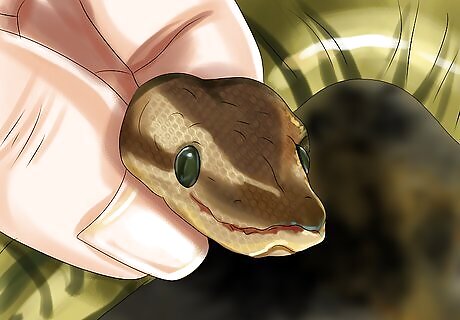
Examine the snake closely before you decide to take it home. A healthy snake should have a clear nose and eyes, neatly arranged scales, healthy-looking skin (no blisters or partial shedding), and breathe without respiratory distress. It should not be lethargic, and should allow you to pick it up without too much fuss. Ask the snake's previous owner about the animal's history. This is an important step to ensure you are getting a healthy snake; ask if the snake has had any issues eating, drinking, moving around, or shedding its skin. You also need to know what it eats and how often as well as the date and quality of its last shed (a well-shed skin comes off all in one piece, if the snake sheds in bits and pieces it may be unhealthy).
Getting the Supplies You’ll Need
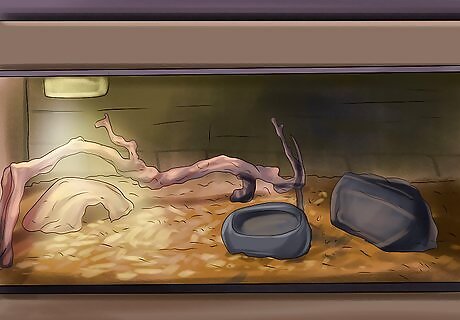
Purchase a home for your snake. You'll need a tank or terrarium with a diagonal at least the length of the snake. Make sure you have a place to put a cage this size. You may need a larger home for your snake as it grows, so be sure you are prepared to purchase a larger terrarium if needed. You can choose a plastic enclosure, a cage made of wood, or a glass terrarium. Don’t pick a cage with mesh screens, as they don’t hold heat well, plus the snake may injure its snout by rubbing on the screen, or wear a hole through it and escape. Snakes are escape artists, so you need to have a very secure lid on your tank to ensure the snake does not get out.
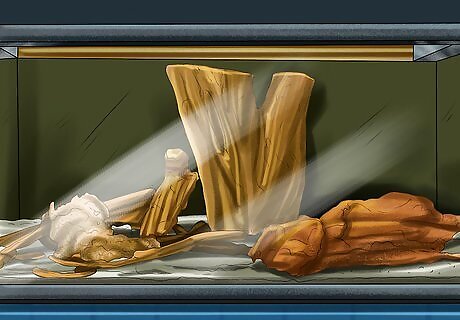
Choose a hiding place and things to climb on. Your snake will also need a hiding place, such as a cave made of rock, a splinter-free piece of driftwood, or a ceramic log to curl up in. Choose something that is durable and easy to clean or replace. Make sure your hiding place is just large enough for your snake. The snake should be able to hide completely out of view in a snug, secure place. You can also provide rocks, branches, and vines for your snake to climb on. If you choose living vines or plants, ensure they are compatible with, and not poisonous, to your snake species.
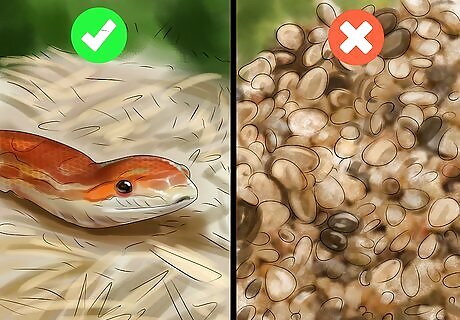
Get cage lining. Your snake needs a soft, absorbent material for the bottom of the cage. Find out what kind of bedding is best-suited for the species of snake you are going to purchase. In many cases, shredded newsprint works well. You can also purchase aspen or cypress shavings for your snake’s bedding. Avoid using fragrant wood shavings, such as cedar or pine. Don’t use aquarium gravel, as the snake could cut itself on the sharp edges of the rocks.

Obtain a heat source. Snakes cannot regulate their body temperature the way mammals can. Snakes require heat lamps either above, on the outside walls, or underneath their tanks. Find out which method is best for the species of snake you have. You should also provide a thermal gradient in the snake’s home; a warm basking area at one end and a cool area at the other end allows the snake to move around depending on its needs. Though heated rocks may look nice, they can burn a snake’s sensitive skin, so do not use them. Snakes tend to take in heat through their belly, so you may want to provide a heating pad instead. You will also need thermometers and hygrometer (humidity gauge) for your snake’s cage to ensure it is the right temperature and humidity.
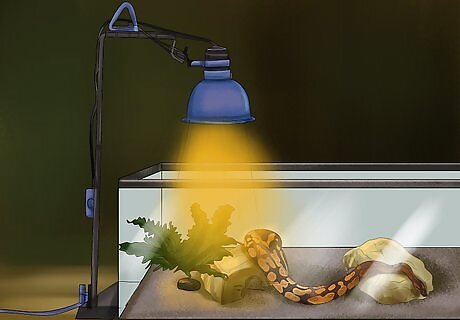
Acquire the proper lighting. Some snakes do well in natural light, while others require special lamps or lights. Do your research to find out what kind of lighting is best for your snake species, and purchase lights if need be. Some snakes are nocturnal while others are diurnal. Be sure to find out which type your specific snake species is and use timers on your lights if you won’t be home or awake when the lights need to turn on or off.
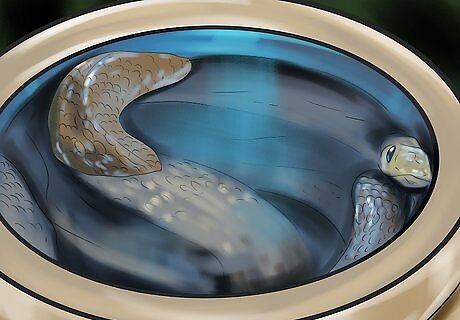
Purchase water dishes. You’ll need a small, heavy, dish for the snake to drink out of. You will also need a larger dish for the snake to soak in.
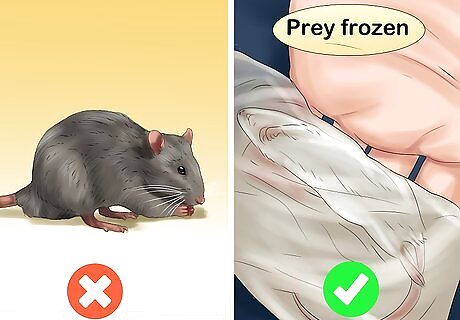
Get snake food. Snakes are carnivores and eat frogs, fish, worms, and rodents. Make sure you are comfortable with the idea of this before getting a snake. The best snake food is pre-killed prey: you buy the prey frozen, thaw it out at home, and feed it to the snake. Be aware of the risks of feeding your snake live prey. Live mice and rats can carry diseases and parasites, and they can bite and struggle, possibly injuring your pet.
Caring for Your Snake
Take your snake to a reptile veterinarian. Go online and search for a reptile veterinarian in your area and decide on one to go with based on experience and reviews. As soon as you buy your pet snake and take it home with you, take it to the vet so that they can perform a physical examination and conduct diagnostic tests to ensure that the snake is healthy and disease-free. Do not take your snake to a regular small animal veterinarian. Working with reptiles is a specialty, so small animal vets may not be knowledgeable enough to provide proper care. During the visit, the vet will likely also provide information on how to properly feed, house, and care for your pet snake. Take your snake to the vet at least annually for check-ups.
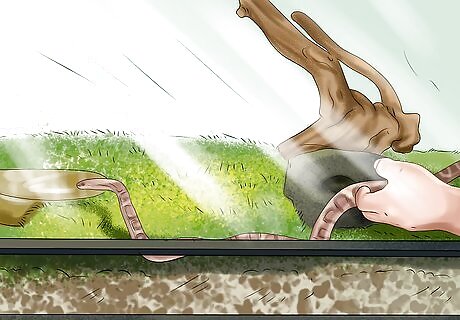
Introduce your snake to its new environment. Don't feed or handle your snake for a few days after it has been introduced to its new home so it has time to acclimate. Ensure the temperature and humidity are correct for your snake species before introducing it to its new home.

Feed the snake. How much and how often you should feed your snake depends on the species and age. Ask your veterinarian when, what, and how much to feed your snake based on its species. In general, young corn snakes should be fed one small mouse every seven days, while adult corn snakes can eat two small mice every week. Both young and adult kingsnakes should be fed a large mouse or rat every seven days. Great care should be taken around the feeding times of all snakes, as this is when they are most aggressive. Never handle your snake when it is hungry. Do not handle them directly after feeding either, as this may cause them to regurgitate their food.

Check the temperature and humidity often. If the temperature or humidity level is off in your snake’s environment, your snake could develop digestion problems. Ensure the temperature and humidity are within acceptable ranges for your species of snake and adjust them immediately if you notice a problem. Different kinds of snakes need different humidity levels, depending on their native area (e.g., Amazonian rain forest versus American southwestern desert). Find out what is best for your particular snake. You can change the humidity in the cage by changing the bedding (aspen shavings decrease humidity, while cypress shavings increase it), putting the water dish in the warmer part of the cage (to increase humidity) or the cooler part (to decrease humidity), or adding sphagnum moss to the cage (to increase humidity).
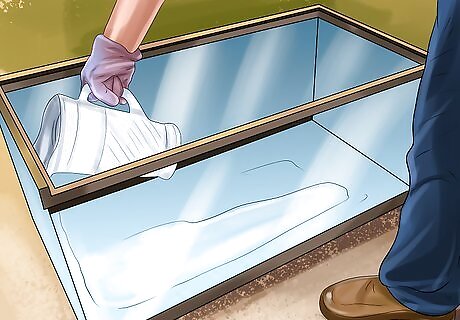
Clean the cage. Change the water once a week (or more if it is visibly dirty). You should clean the entire cage at least once a month. Replace the bedding, wash and refill all water dishes, and clean the sides of the tank. Make sure you have a place to put your snake while cleaning its cage so it does not escape. All reptiles can carry salmonella bacteria. After handling your snake, be sure to wash your hands thoroughly. Don't let children under age 6 handle snakes. Never clean the cage or its components in your kitchen sink, and keep the snake away from human food and dishes.
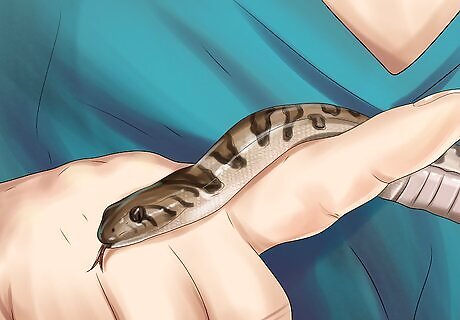
Enjoy! Snakes are good pets and solid friends. Handle your snake carefully, bond with it, and enjoy your new pet.


















Comments
0 comment